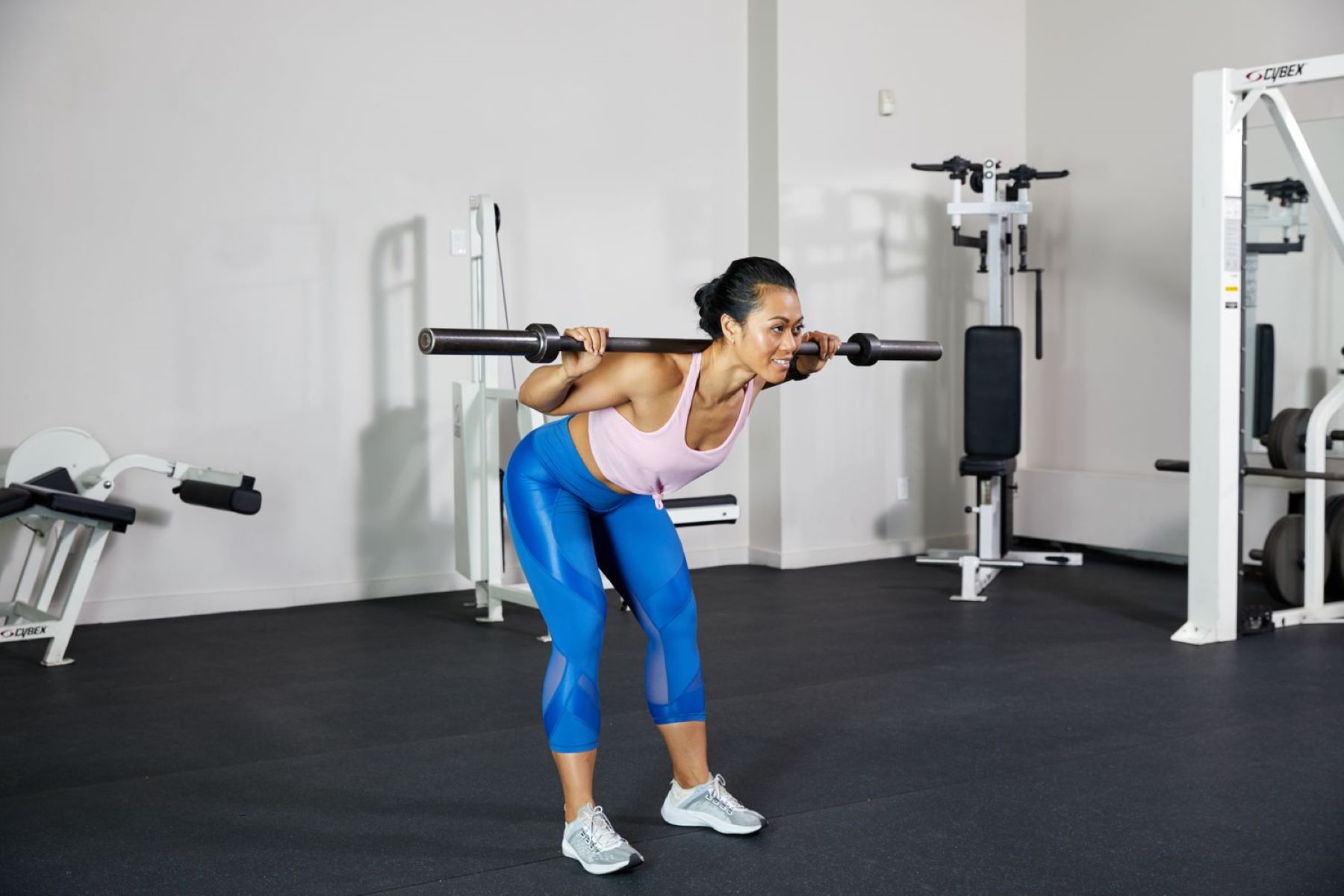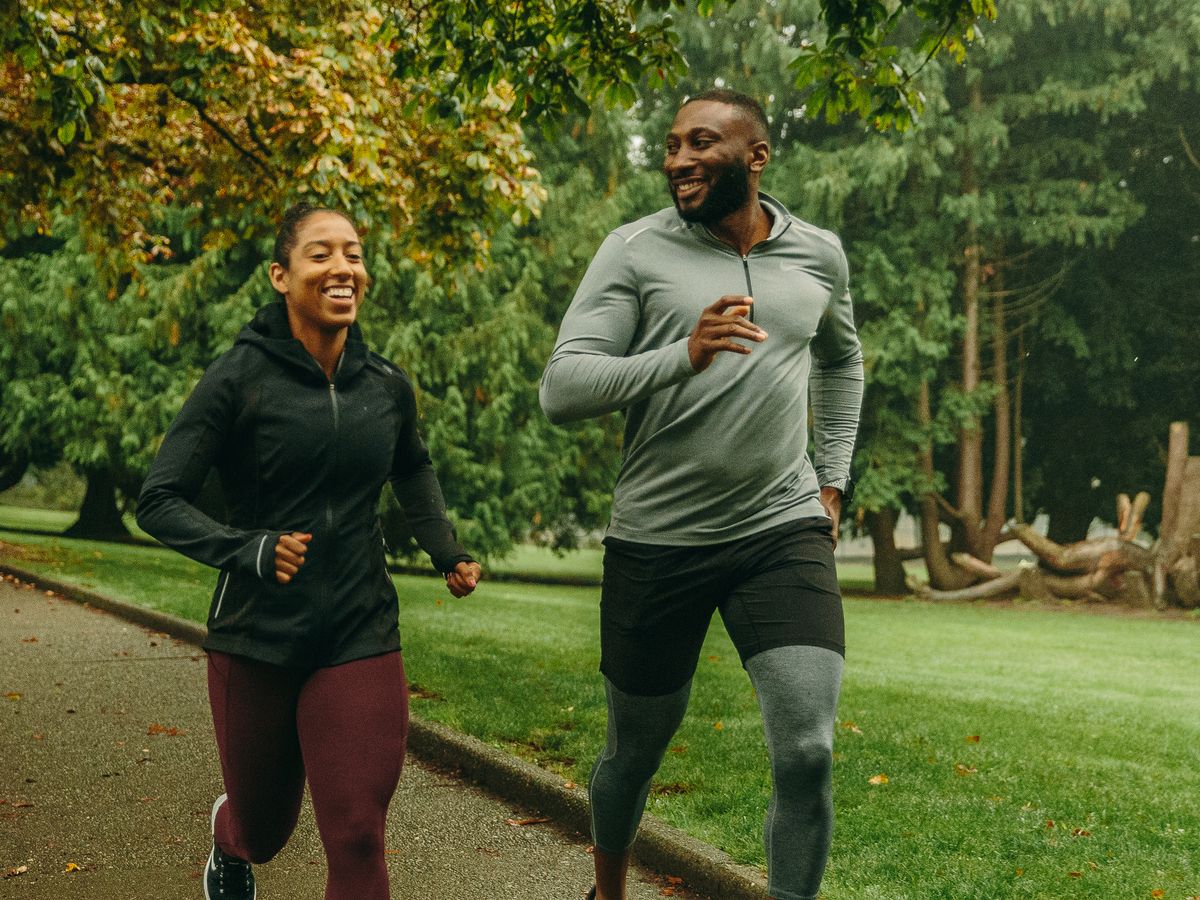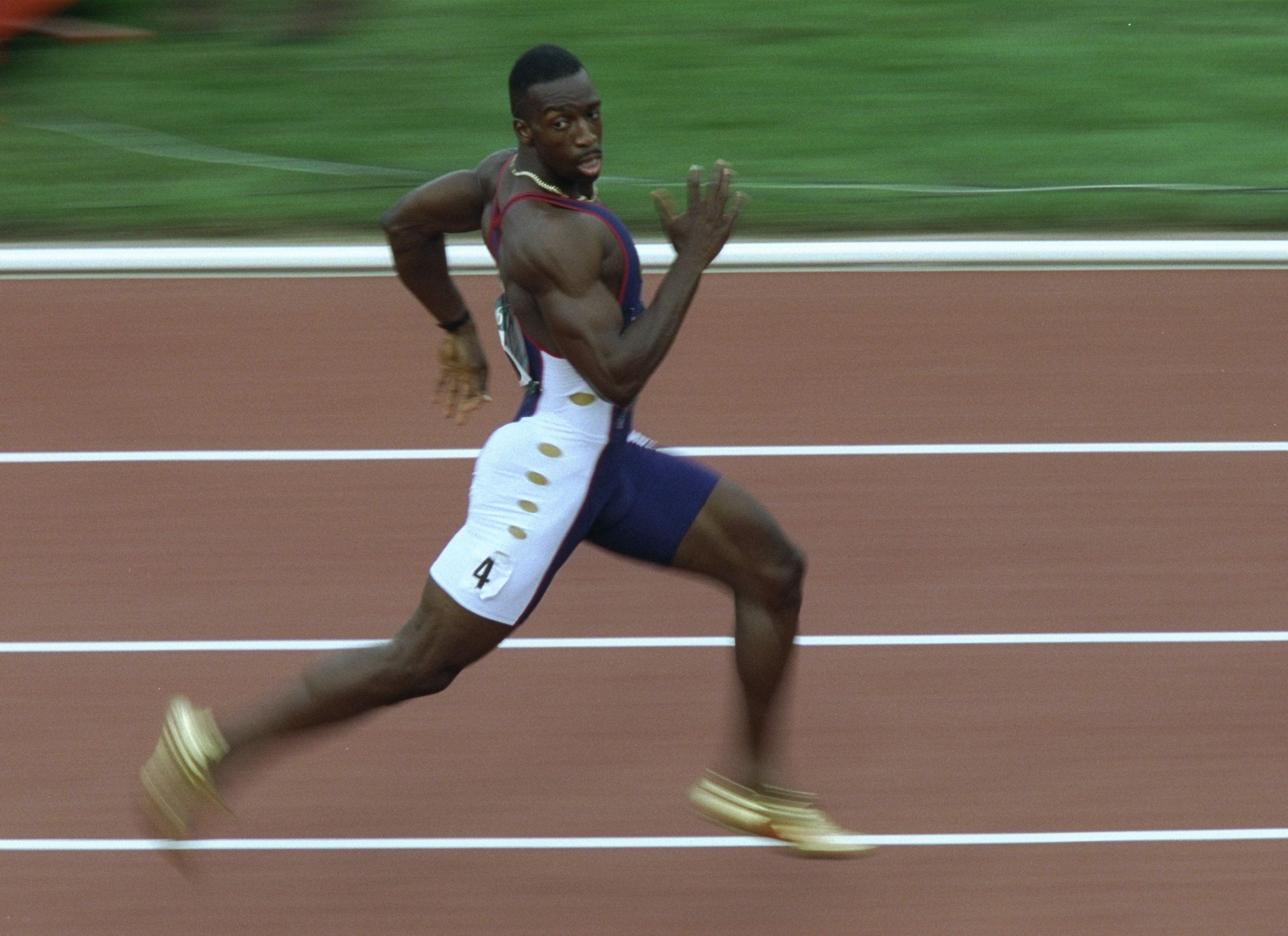Home>Misc>Featured>How To Get Less Muscular Legs For Distance Running


Featured
How To Get Less Muscular Legs For Distance Running
Modified: January 22, 2024
Achieve leaner and more efficient legs for distance running with our featured guide on how to get less muscular legs. Step-by-step tips to help you optimize your running performance.
Introduction
When it comes to distance running, having muscular legs can be a double-edged sword. While strong and toned leg muscles are beneficial for power and stability, excessive muscle mass can hinder endurance and efficiency. This can make it challenging to maintain a steady pace and run longer distances without feeling fatigued. So, if you are looking to reduce the size of your leg muscles for distance running, you’ve come to the right place.
It’s important to note that the goal here is not to completely eliminate all muscle mass from your legs. Instead, we want to find a balance where your leg muscles are strong and functional, but not overly bulky. This will help improve your running performance, prevent injuries, and enhance your overall endurance.
In this article, we will explore various strategies to help you achieve less muscular legs for distance running. We will discuss the role of muscle mass in distance running, the importance of balancing strength training with cardiovascular training, specific exercises to target leg muscle reduction, incorporating high-intensity interval training (HIIT) into your routine, proper nutrition for muscle reduction, and monitoring and adjusting your training intensity. By incorporating these strategies into your training regimen, you’ll be on your way to achieving leaner and more efficient leg muscles for distance running.
Understanding the Role of Muscle Mass in Distance Running
Before diving into strategies for reducing leg muscle mass, it’s important to understand the role that muscle mass plays in distance running. Muscles are responsible for generating force and power, which propel us forward during running. Therefore, having strong leg muscles is essential for performance and injury prevention.
However, when it comes to long-distance running, excessive muscle mass can become a disadvantage. Larger muscles require more oxygen and energy to function, which leads to increased fatigue. This can negatively impact your endurance and make it harder to maintain a consistent pace over long distances.
Additionally, bulky leg muscles can also restrict your range of motion and lead to inefficient running mechanics. This can put unnecessary stress on the joints and increase the risk of injuries such as shin splints or knee pain. Therefore, finding the right balance between muscle mass and functionality is crucial for distance runners.
It’s important to note that reducing muscle mass doesn’t mean sacrificing strength. Instead, the focus should be on developing strong, lean, and functional muscles that support endurance and efficiency. This can be achieved through a combination of strength training, cardiovascular training, targeted exercises, and proper nutrition.
To achieve less muscular legs for distance running, we need to adjust our training and lifestyle choices accordingly. By implementing the strategies discussed in this article, you’ll be on the right track to achieving the optimal balance of muscle mass for long-distance running.
Balancing Strength Training and Cardiovascular Training
One of the key factors in achieving less muscular legs for distance running is finding the right balance between strength training and cardiovascular training. Both are essential components of a well-rounded training program, but they need to be adjusted to promote lean muscle development and endurance.
Strength training plays a crucial role in building and maintaining muscle mass. However, to reduce leg muscle size for distance running, it’s important to focus on exercises that promote muscular endurance rather than hypertrophy. This means using lighter weights with higher repetitions and incorporating exercises that target multiple muscle groups, such as lunges, squats, and step-ups.
Cardiovascular training, on the other hand, is essential for improving endurance and burning excess calories. Long-distance running, HIIT workouts, cycling, and swimming are all excellent forms of cardiovascular exercise that help increase cardiovascular fitness without adding excess bulk to your legs.
While it’s important to incorporate both strength training and cardiovascular training into your routine, the emphasis should be on cardiovascular exercises for reducing leg muscle mass. Aim for at least four to five days of cardio workouts per week, gradually increasing the duration and intensity as your endurance improves.
Remember to listen to your body and give yourself enough time to recover between strength training and cardio sessions. Overtraining can lead to muscle breakdown and hinder your progress. Be sure to include rest days in your training schedule to allow your muscles to recover and repair.
To strike the right balance, consider working with a certified strength and conditioning specialist or a running coach who can design a customized training plan tailored to your goals. They can provide guidance on exercise selection, volume, and intensity to help you achieve less muscular legs while maintaining strength and endurance.
By finding the right balance between strength training and cardiovascular training, you’ll be able to promote lean muscle development and boost your endurance for optimal distance running performance.
Targeted Exercises for Reducing Leg Muscle Mass
If you’re looking to reduce leg muscle mass for distance running, incorporating targeted exercises into your training regimen is essential. These exercises focus on developing lean and functional muscles while minimizing hypertrophy or muscle growth. Here are some exercises specifically designed to help you achieve less muscular legs for distance running:
- Bodyweight Squats: Squats are a compound exercise that targets multiple leg muscles. By using just your bodyweight, you can focus on building endurance and improving muscular strength without excessive bulk. Perform 2-3 sets of 12-15 repetitions.
- Lunges: Lunges are another effective exercise for targeting the leg muscles. They engage the quadriceps, hamstrings, and glutes while promoting balance and stability. Start with bodyweight lunges and gradually add dumbbells for added resistance. Aim for 2-3 sets of 10-12 reps on each leg.
- Step-ups: Step-ups are a great exercise that mimics the movement of running by engaging the lower body muscles. Find a sturdy platform or bench and step up with one leg followed by the other. Perform 2-3 sets of 10-12 repetitions on each leg.
- Single-Leg Squats: Single-leg squats, also known as pistol squats, are an advanced exercise that challenges your leg muscles while improving balance and stability. This exercise targets the quadriceps, hamstrings, and glutes. Start with assisted pistol squats using a chair or a support, then gradually progress to unassisted pistol squats. Perform 2-3 sets of 8-10 reps on each leg.
- Calf Raises: While calf muscles don’t contribute significantly to bulky legs, they can add unwanted mass for some individuals. Focus on performing calf raises with lighter weights and higher repetitions to promote muscle endurance rather than hypertrophy. Perform 2-3 sets of 15-20 repetitions.
Remember to incorporate these exercises into your overall training program while still maintaining a balance between strength training and cardiovascular training. Aim to perform these exercises 2-3 times per week, allowing for proper rest and recovery between sessions. As you progress, gradually increase the intensity and resistance to continue challenging your muscles without promoting excessive growth.
It’s important to note that while these exercises can help reduce leg muscle mass, genetics and individual factors play a role in how your body responds to training. Therefore, it’s essential to listen to your body, adjust the intensity and volume of the exercises as needed, and consult with a professional trainer or coach for personalized guidance.
By incorporating targeted exercises into your routine, you’ll be on your way to achieving leaner leg muscles that are ideal for distance running.
Incorporating High-Intensity Interval Training (HIIT) into Your Routine
High-Intensity Interval Training (HIIT) is a powerful tool for reducing leg muscle mass and improving overall cardiovascular fitness. HIIT involves alternating periods of high-intensity exercise with short recovery periods, allowing you to maximize calorie burn and improve endurance while minimizing the risk of excessive muscle growth.
When it comes to HIIT for reducing leg muscle mass, focus on exercises that engage the entire body, rather than isolating specific leg muscles. This way, you can promote overall fat loss and endurance without adding bulk. Here are some ways to incorporate HIIT into your routine:
- Sprints: Sprint intervals are an effective way to burn calories and improve cardiovascular fitness. Find a flat surface or a track, and sprint at maximum effort for a specific distance or time (e.g., 30 seconds), followed by a recovery period of walking or slow jogging. Repeat this cycle for 10-15 minutes.
- Stair Intervals: Climbing stairs is a great way to engage the leg muscles while getting an intense cardiovascular workout. Find a set of stairs or a stair climber machine and alternate between running or sprinting up the stairs and recovering by walking down or using the elevator. Aim for 10-15 minutes of stair intervals.
- Tabata Training: Tabata training involves 20 seconds of all-out effort followed by 10 seconds of rest, repeated for four minutes. You can choose exercises like burpees, mountain climbers, or jump squats to engage multiple muscle groups and increase cardiovascular demand.
- Circuit Training: Create a circuit-style workout that combines strength exercises with cardio intervals. This can include bodyweight exercises like push-ups, jump lunges, plank jacks, and skipping rope. Perform each exercise for a specific period (e.g., 30 seconds to 1 minute) with minimal rest between exercises. Repeat the circuit 2-3 times.
When incorporating HIIT into your routine, start with 1-2 sessions per week and gradually increase the frequency and intensity over time. It’s important to listen to your body and take adequate rest between HIIT workouts to allow for proper recovery.
Remember, the goal of HIIT for reducing leg muscle mass is to focus on overall calorie burn and cardiovascular conditioning. By incorporating these high-intensity intervals into your training program, you’ll promote fat loss while developing lean and functional leg muscles for distance running.
Proper Nutrition and Caloric Intake for Muscle Reduction
Proper nutrition is essential for reducing leg muscle mass while maintaining strength and energy levels for distance running. By optimizing your diet and caloric intake, you can promote fat loss and support lean muscle development. Here are some key nutritional strategies to consider:
- Caloric Deficit: To reduce muscle mass, you need to create a caloric deficit by consuming fewer calories than you burn. This deficit should be gradual and sustainable, aiming for a moderate weight loss of about 1-2 pounds per week. Consult with a registered dietitian or nutritionist to determine the appropriate calorie intake for your goals.
- Protein Intake: While reducing muscle mass, it’s important to maintain adequate protein intake to support muscle recovery and repair. Aim for a moderate protein intake of around 0.7-1 gram per pound of body weight. Include lean sources of protein such as chicken, turkey, fish, tofu, and legumes in your meals.
- Complex Carbohydrates: Carbohydrates are essential for fueling your workouts and maintaining energy levels. Opt for complex carbohydrates like whole grains, fruits, vegetables, and legumes, which provide sustained energy without excessive calorie intake. Limit refined sugars and processed carbohydrates that can lead to weight gain.
- Healthy Fats: Include healthy fats in your diet to support overall health and satiety. Focus on sources like avocados, nuts, seeds, and olive oil. These fats provide essential nutrients and help keep you feeling full and satisfied.
- Hydration: Proper hydration is crucial for both performance and muscle reduction. Drink adequate water throughout the day and during your workouts to maintain optimal hydration levels. Avoid sugary beverages and excessive caffeine, as they can interfere with hydration and overall health.
- Meal Timing: Consider spacing your meals throughout the day to support stable energy levels and avoid excessive calorie consumption. Aim for balanced meals that include protein, complex carbohydrates, healthy fats, and plenty of fruits and vegetables.
- Listen to Your Body: Pay attention to hunger and satiety cues, and avoid restrictive diets that may lead to nutrient deficiencies or unhealthy relationships with food. Focus on nourishing your body with wholesome, nutrient-dense foods while still enjoying treats in moderation.
It’s important to remember that everyone’s nutritional needs and preferences are unique. Working with a registered dietitian or nutritionist can provide personalized guidance and help you develop a sustainable eating plan that supports your goals of muscle reduction while fueling your running performance.
By optimizing your nutrition and caloric intake, you can create an environment that promotes fat loss and lean muscle development, leading to less bulky legs for distance running.
Monitoring and Adjusting Training Intensity
As you work towards achieving less muscular legs for distance running, it’s crucial to monitor and adjust your training intensity to ensure optimal results. By properly assessing your progress and making necessary adjustments, you can continue challenging your muscles without promoting excessive growth. Here are some strategies for monitoring and adjusting your training intensity:
- Keep a Training Journal: Maintaining a training journal can help you track your workouts, including the exercises performed, sets, reps, and weight used. This allows you to monitor your progress over time and identify any trends or plateaus.
- Regular Body Measurements: Measure your body periodically to track changes in muscle size and overall body composition. While the number on the scale may not be the sole indicator of progress, taking measurements of key areas like your thighs and calves can give you a clearer picture of the changes in muscle mass.
- Pay Attention to Your Body: Listen to how your body feels during and after workouts. If you notice excessive muscle soreness or fatigue, it may be a sign that your training intensity is too high. On the other hand, if you don’t feel challenged enough, it may be time to increase the intensity or incorporate new exercises.
- Periodize Your Training: Periodization involves dividing your training into different phases, each with a specific focus and intensity level. This allows for targeted muscle development while preventing plateau and burnout. Consider working with a coach or trainer to design a periodized training plan that aligns with your goals.
- Incorporate Deload Weeks: Deload weeks involve reducing training volume and intensity to allow for proper recovery and muscle adaptation. This helps prevent overtraining, promote recovery, and minimize the risk of injury. Schedule regular deload weeks every 4-6 weeks or as needed based on your progress and recovery.
- Gradually Increase Resistance: As your strength and endurance improve, gradually increase the resistance or weight used in your exercises. This progressive overload helps stimulate muscle adaptation without excessive growth. Avoid using extremely heavy weights that promote hypertrophy.
- Consult with Professionals: If you’re unsure about how to monitor and adjust your training intensity, consider seeking guidance from certified trainers, coaches, or sports professionals. They can provide expert advice and tailor a training plan specific to your goals and body type.
Remember, finding the optimal training intensity for reducing leg muscle mass is an ongoing process. Regularly assess your progress, listen to your body, and make adjustments as needed to ensure that your training aligns with your goals.
By monitoring and adjusting your training intensity, you’ll be able to continuously challenge your muscles, promote lean muscle development, and achieve less muscular legs for distance running.
Conclusion
Achieving less muscular legs for distance running requires a combination of targeted training, strategic nutrition, and a balanced approach to exercise. By implementing the strategies outlined in this article, you can promote lean muscle development, improve your endurance, and enhance your overall performance as a distance runner.
Understanding the role of muscle mass in distance running is crucial. While strong leg muscles provide power and stability, excessive muscle mass can hinder endurance and efficiency. Striking the right balance between muscle development and functionality is key.
Balancing strength training with cardiovascular training is essential for achieving less muscular legs. Incorporate exercises that focus on muscular endurance rather than hypertrophy. High-intensity interval training (HIIT) and targeted exercises like bodyweight squats, lunges, step-ups, and single-leg squats can help promote lean muscle development and reduce bulkiness.
Proper nutrition and caloric intake play a vital role in muscle reduction. Creating a caloric deficit, consuming adequate protein, and fueling your body with complex carbohydrates and healthy fats are key elements to support fat loss while maintaining strength and energy levels.
Monitoring and adjusting training intensity is crucial for progress. Keeping a training journal, measuring your body, paying attention to how your body feels, and gradually increasing resistance allow you to challenge your muscles without promoting excessive growth. Periodizing your training and incorporating deload weeks can also prevent overtraining and optimize muscle adaptation.
Remember, individual factors and genetics play a role in how your body responds to training. It is important to listen to your body and make adjustments as needed. Consult with professionals who can provide personalized guidance and support along your journey.
By implementing these strategies and maintaining a holistic approach to your training and nutrition, you’ll be well on your way to achieving less muscular legs for distance running. Embrace the process, stay consistent, and enjoy the benefits of improved performance and endurance in your running endeavors.









